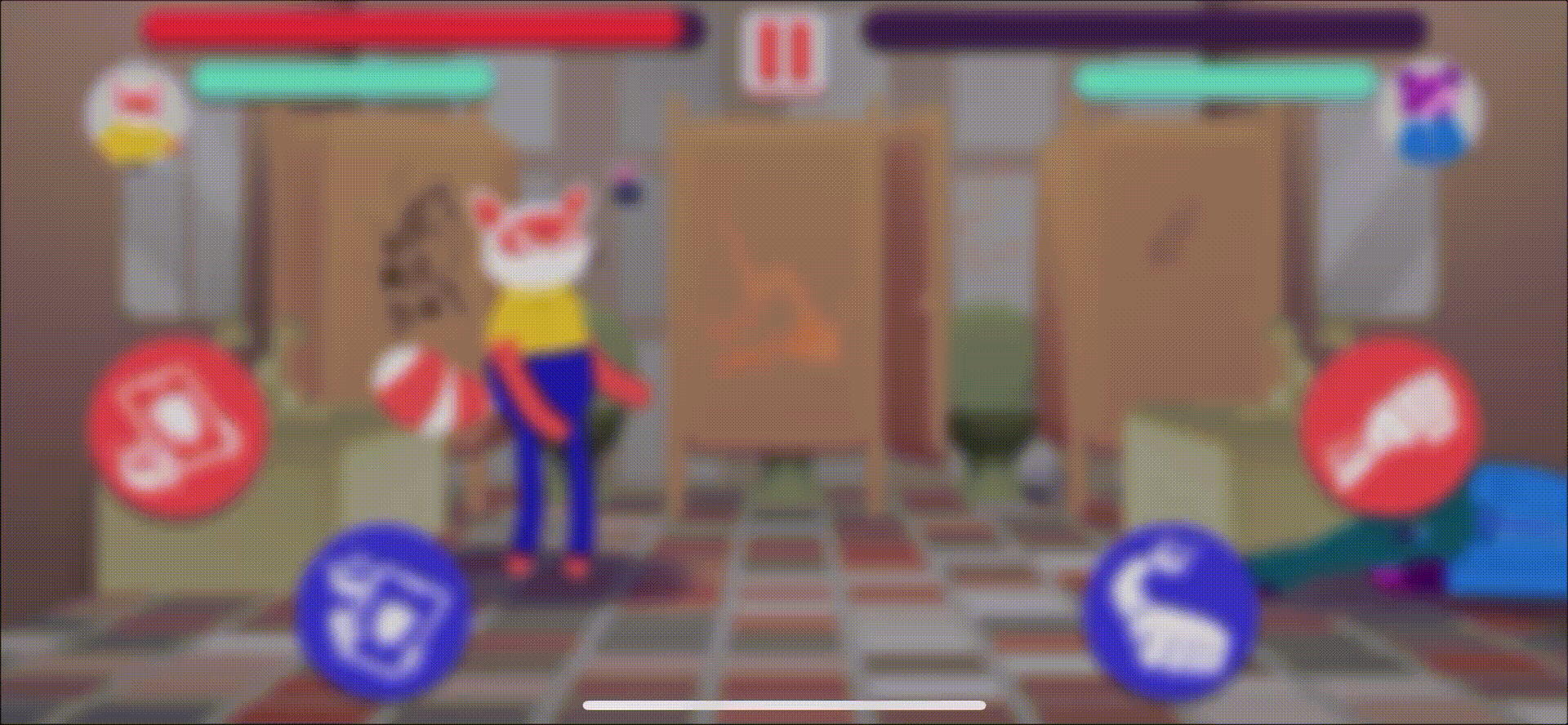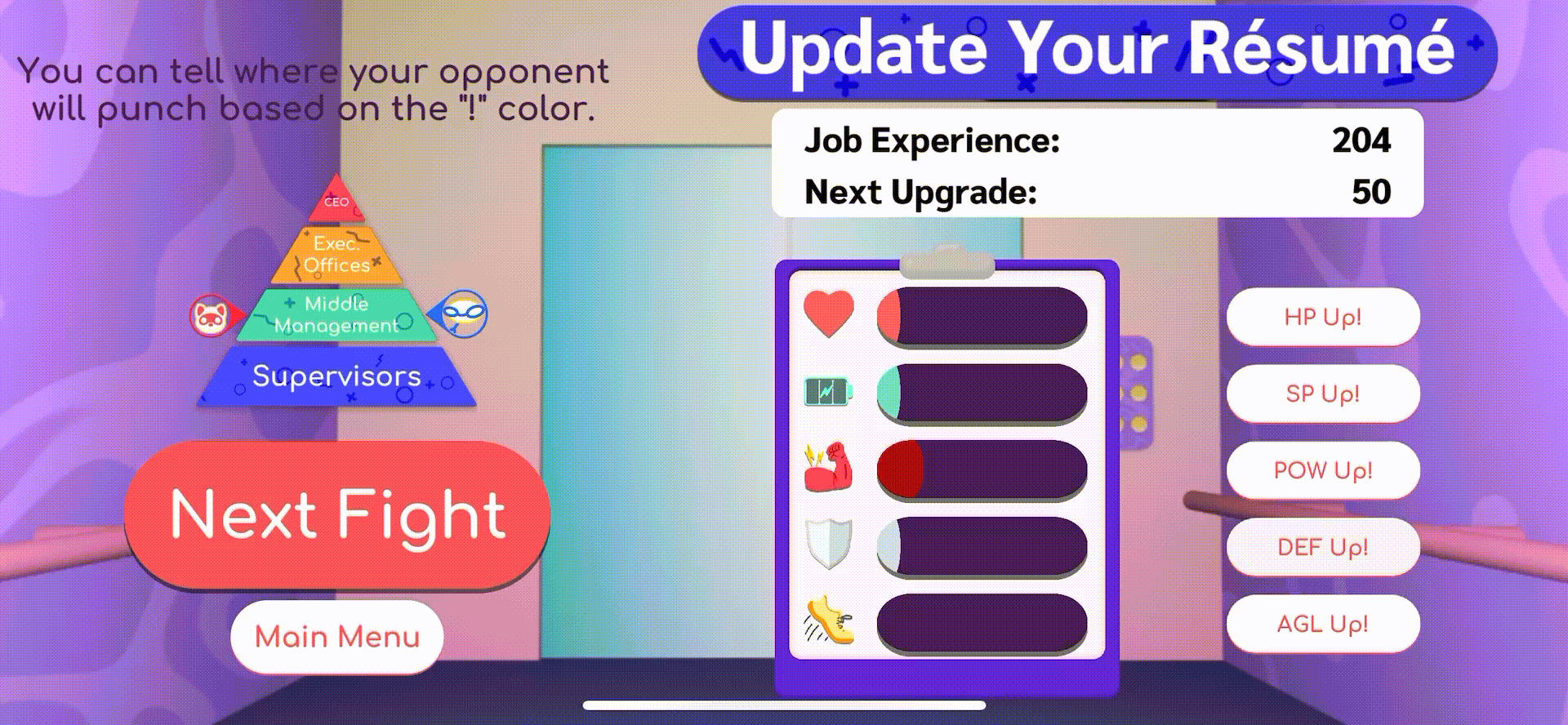Clock Out!! Daniel Narvaez




| Platforms: | iOS, iPadOS, Android |
| Duration: | 3 months |
| Team Size: | 7 |
| Builds: | App Store, Google Play |
In a fighting game with only 4 combat actions, we needed a way to create increasingly difficult boss encounters that didn't depend on complex mechanics.
I designed a stat system with 5 core attributes: health (HP), stamina (SP), power (POW), defense (DEF), and agility (AGI) (Figure 1). I also implemented different scaling rates between the player character and bosses. The player (Intern) started with higher base stats but grew linearly, while bosses began weaker but scaled exponentially with each encounter.
Taking inspiration from Akira Kitamura's design rules for Mega Man 1 & 2 (NES), I modified the exponential curve so that every 4th boss had fewer stat upgrades than the previous (Figure 2). I designed this pattern to reinforce players' sense of improvement.
These choices created an environment where players could focus on learning the controls in early fights, but later encounters became more challenging through asymmetrical growth. The shark tooth pattern provided relief for players after overcoming a challenging fight.
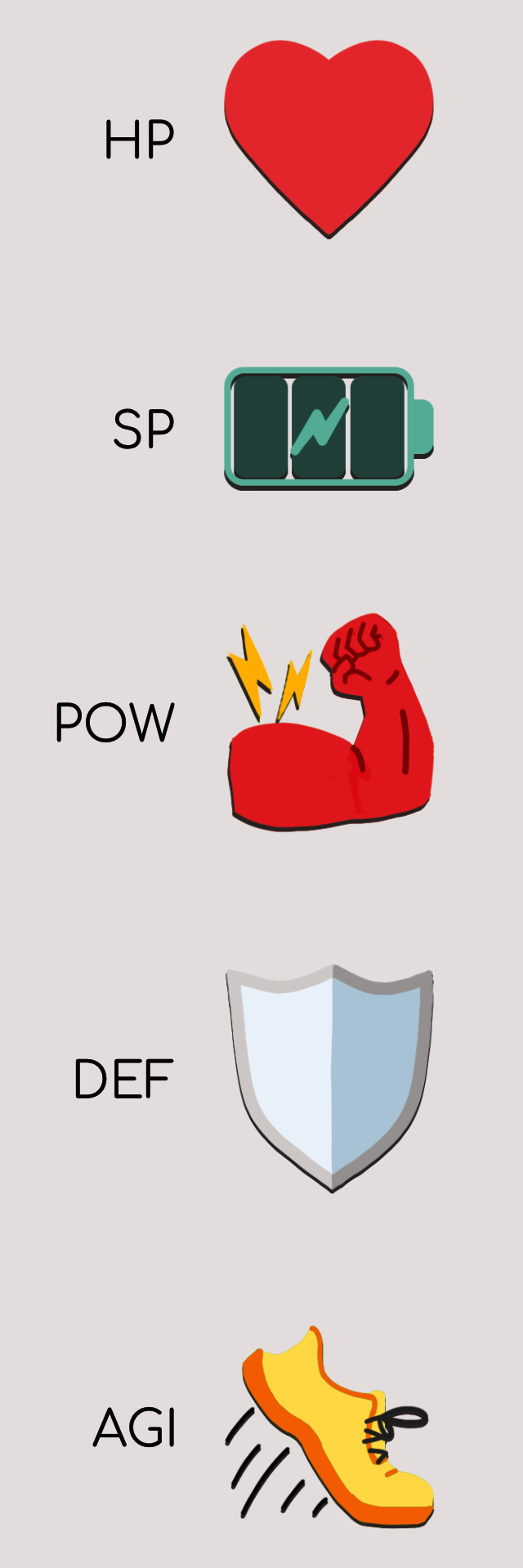
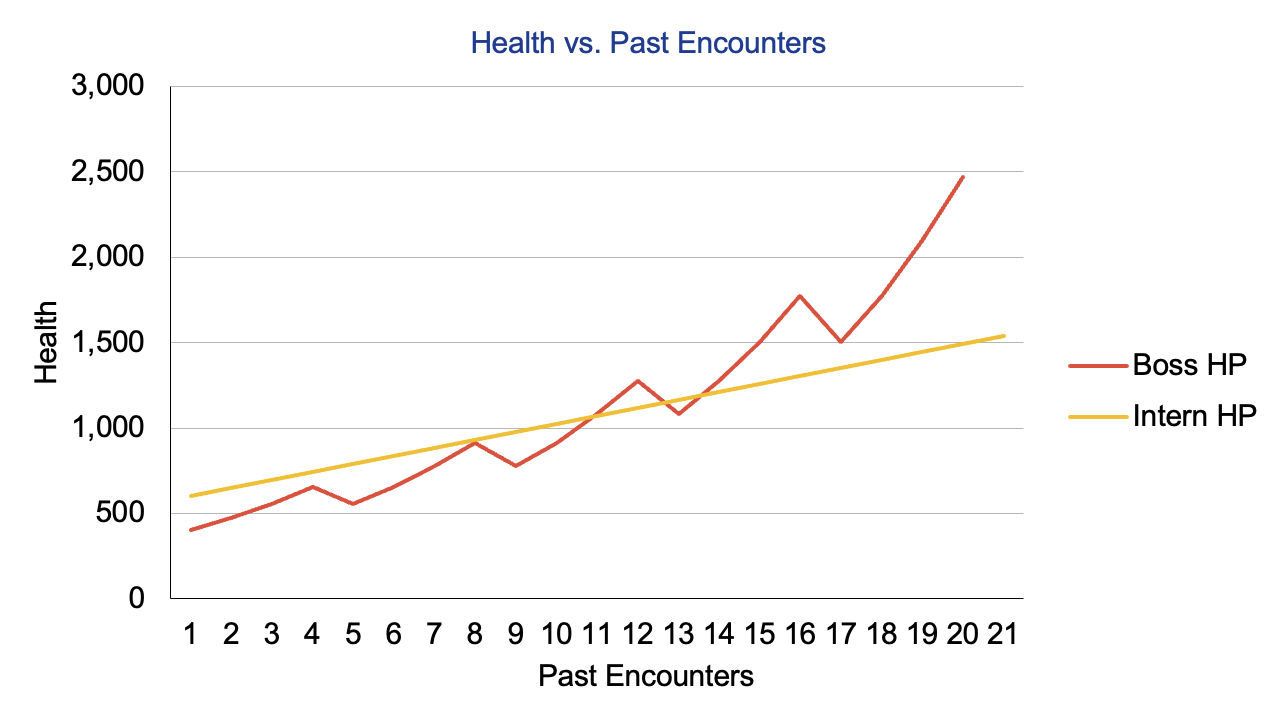
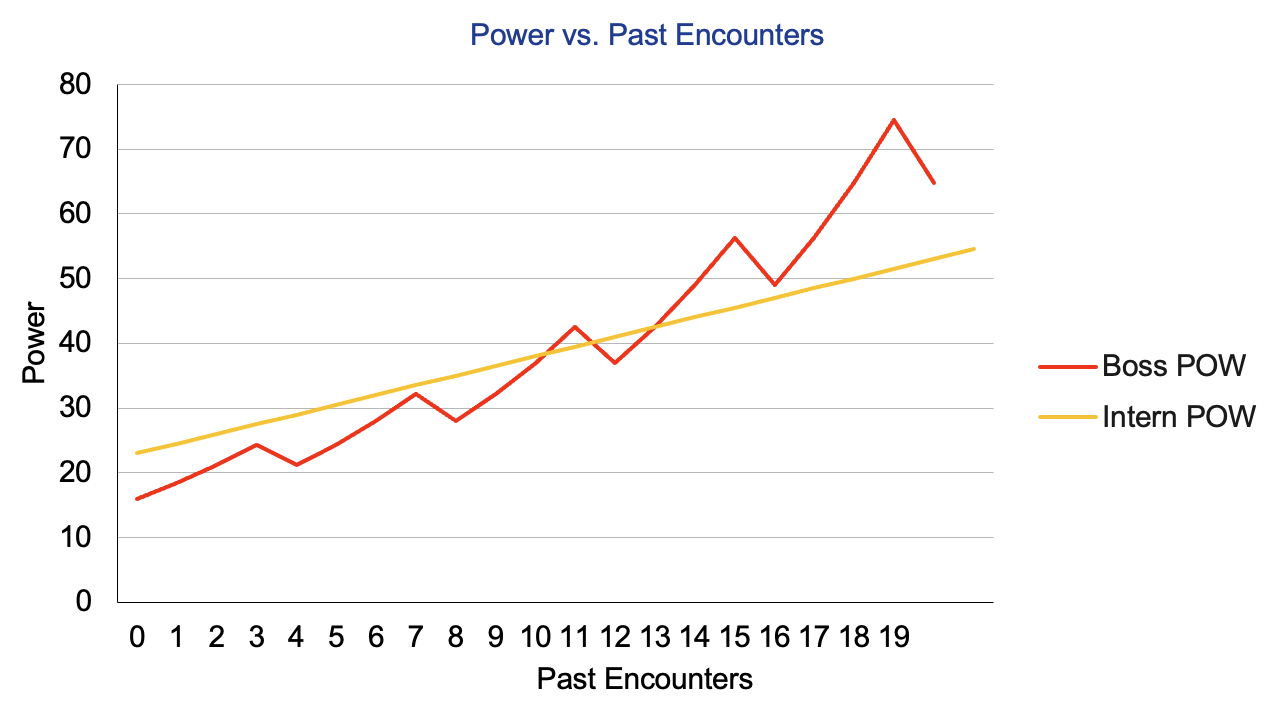
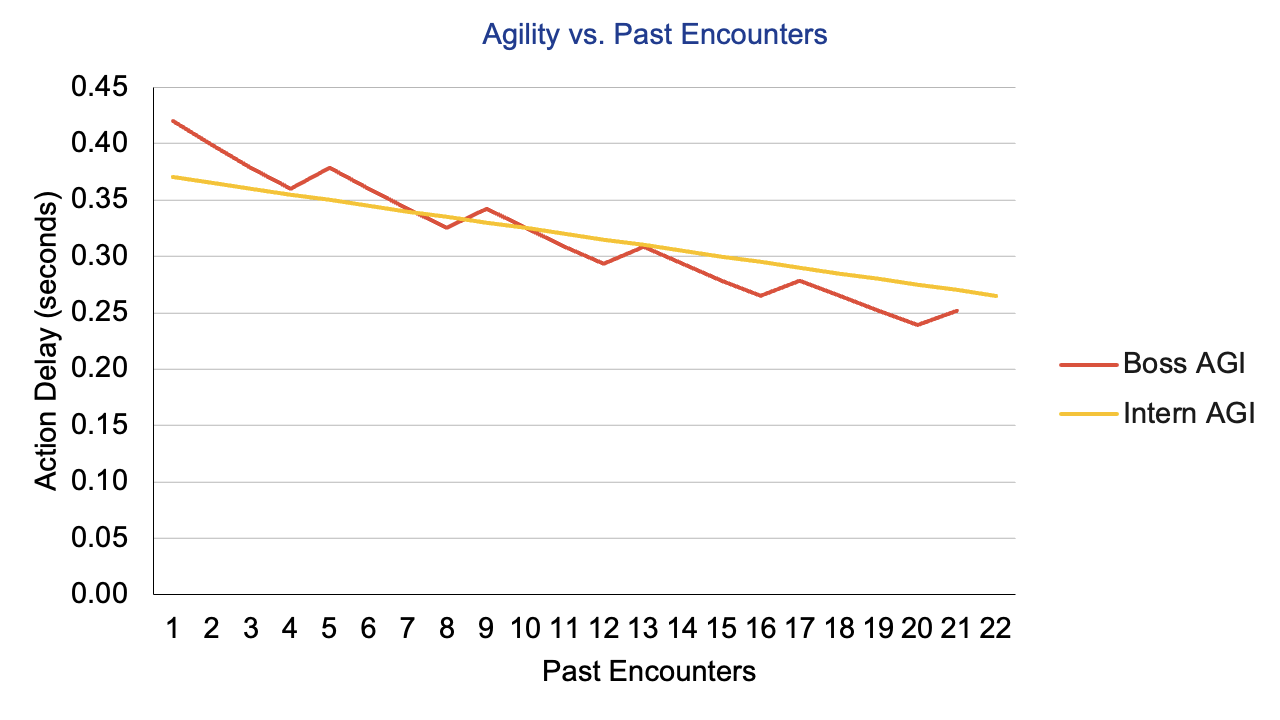
The artists created 17 unique boss characters, and we wanted each one to fight differently. Our original stat system increased enemy power exponentially, but every boss felt the same to fight because they all shared identical stat distributions regardless of which one spawned.
I designed four types (agile, burly, strong, and all-around) and gave each one favored stats that were more likely to increase than others. Then I reworked the progression system so bosses only upgraded three random stats between fights instead of all five, with each stat's upgrade probability weighted by their type. I made the Machinations diagram to simulate these changes (Figure 3).
This created more diversity in the boss roster. Each body type played differently in combat, even though they all used the same four combat actions. The randomized stat upgrades added variety to repeated playthroughs since the same boss could have different strengths each time the player encountered them.
Loading... 0%
After implementing boss types, we discovered another balance issue. The Intern upgraded all five stats after every fight, but bosses only upgraded three. This meant bosses couldn't scale fast enough to create proper challenge, which broke the game's difficulty curve.
I thought of two solutions, and tested one at a time:
Early playtests showed the first option didn't work because players felt no meaningful progression between the early and late stages of the game. So, I designed an economy system where players earn 'job experience' based on a combat performance report (Figure 4). Players could spend job experience between fights to manually upgrade, i.e. increase, their stats through a résumé interface (Figure 5).
The new economy solved our scaling issues and added two benefits: players earned enough job experience per fight to keep up with boss difficulty, and they gained control over their own challenge level since upgrades became optional.
